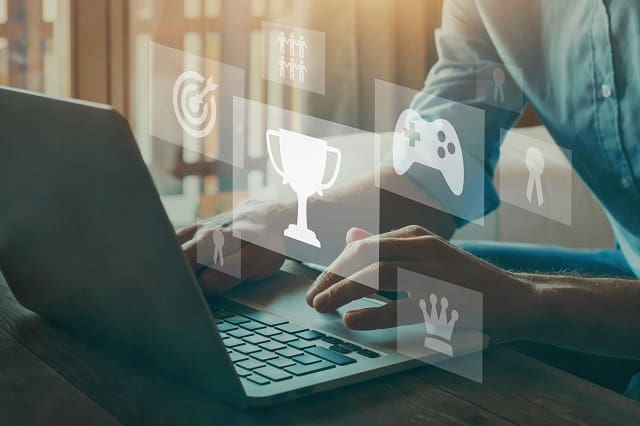
In the pursuit of learning, many educators these days are turning to new discoveries about human psychology to make learning more fun. One of these effective strategies to promote learner engagement is gamification.
Gamification is the process of using game-like structures and rewards to prompt engagement and satisfaction. In online education, it is used to promote and make learning more fun while driving students to succeed.
There’s a lot of fascinating psychology behind why gamification works and plenty of interesting ways the digital world has become a perfect testing ground for gamification theory. The rest of this article will dive deep into just what exactly gamification is and how it is used.
What Does Gamification Look Like?
Your body releases chemicals like dopamine and there is increased electrical activity in your brain when you earn a digital badge or medal for completing an achievement― that’s the effect of gamification in a nutshell. Game designers know this and use reward signals to get kids (and adults) addicted to playing a game in order to continue getting the reward feeling. In a less nefarious way, Gamification relies on the sensation of achievement and the physiological rewards gained when a learner gains a badge, or is coming first on a leader board.
In a nutshell, learners are asked to strive to overcome challenges in order to earn points and progress in the game-style system. As a result, the brain releases dopamine, which in turn motivates the player even more. A great example of this is Nitro Type, a speed typing platform that pits players against other people worldwide to see who can type the fastest.
In many learning games like this, there are the ubiquitous digital coins you can earn and dozens of unique cars to collect; however, at the same time, players are leveling up their typing skills. Other websites like Duolingo make use of a digital point system and promote competition to improve learning.
Banks, hotels, and credit card companies all utilize gamification in cashback rewards, badges for future discounts, and earning points based on spending.
Gamification is even used in the fitness industry. Pedometer apps offer rewards for reaching a certain total distance walked, and fitness programs assign points based on what routines and workouts you complete. Ever pushed a bit harder to close that last ring on an Apple watch?
Another prominent field where gamification is taking root is education. Educators constantly look for ways to improve student engagement and make lessons more interesting and fun. Gamification takes things that would otherwise be fairly utilitarian and adds a little ‘sparkle’.
What is the Difference Between Gamification and Game-Based Learning?
Game-based learning (GBL) differs from gamification in that it uses games as a learning method rather than turning the entire learning experience into a game.
The goals of each are very similar. Both seek to utilize the principle of gratification to promote learning; however, GBL is more discrete, typically boiling down the game to learning a specific skill set.
Game-based learning may include quizzes or competitions to see who knows the company policy the best or a civics classroom simulation where you take on the role of a candidate for office and compete with your peers.
On the other hand, Gamified learning generally uses achievements, progress bars, and level-up systems to transform a learning experience into a game.

What Are the Benefits of Gamification?
The most fundamental reason why gamification works is that it triggers instant gratification, making people come back for more. It’s an anti-procrastination tool, if you will.
Applying this theory to any learning experience often yields results. Students report that they feel less stress and are more motivated to work to achieve the goals laid out before them.
Exercising, improving workplace efficiency, developing new skills – all benefit from some type of gamification.
One of the major gamification benefits for the enterprise is the amount of feedback it brings. With leader boards, progress tracking, badges, time spent, total achievements, benchmarking – the company is gaining incredibly other useful data data.
Conclusion
The concept of winning or earning something desirable is a powerful intrinsic motivator. Indeed, for all you parents out there, there’s even a website called Chore Wars, which (you guessed it) rewards your kids (and you!) with titles, progress, and levels for completing chores.
You work as a family unit to defeat monsters and earn XP based on what chores you complete. So how about it? Have you beaten the dishwashing monster yet?
As a whole, gamification has become a buzzword in the education scene. It’s amazing to consider that not long ago, the concept of using game-like principles in learning would have been foreign to most people. So where do you start? Many Learning Management Systems have the ability to plug in badge applications. This is a simple, first step in creating a dynamic learning environment in your organisation.
